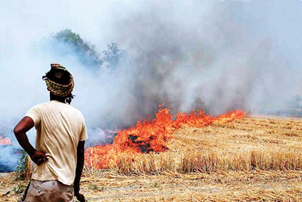PREVIOUS
Stubble burning in Punjab
May 28 , 2020
1515 days
939
0
- Punjab has witnessed a spike in incidents of stubble burning in this year.
- The ban and action against the people burning the crop residue is regulated under the Air (Prevention and Control of Pollution) Act, 1981.
- It is a common practice followed by farmers to prepare fields for sowing of wheat in November as there is little time left between the harvesting of paddy and sowing of wheat.
- Stubble burning results in emission of harmful gases such carbon dioxide, sulphur dioxide, nitrogen dioxide along with particulate matter.
- Open stubble burning emits large amounts of toxic pollutants in the atmosphere which contain harmful gases like methane (CH4), Carbon Monoxide (CO), Volatile organic compound (VOC) and carcinogenic polycyclic aromatic hydrocarbons.
- They may eventually cause smog.
- Burning husk on ground destroys the nutrients in the soil, making it less fertile.
- Heat generated by stubble burning penetrates into the soil, leading to the loss of moisture and useful microbes.
- An innovative experiment has been undertaken by the Chhattisgarh government by setting up gauthans.
- A gauthan is a dedicated five-acre plot, held in common by each village, where all the unused stubble is collected through people’s donations.
- After that, it is converted into organic fertiliser by mixing with cow dung and few natural enzymes.

Leave a Reply
Your Comment is awaiting moderation.


